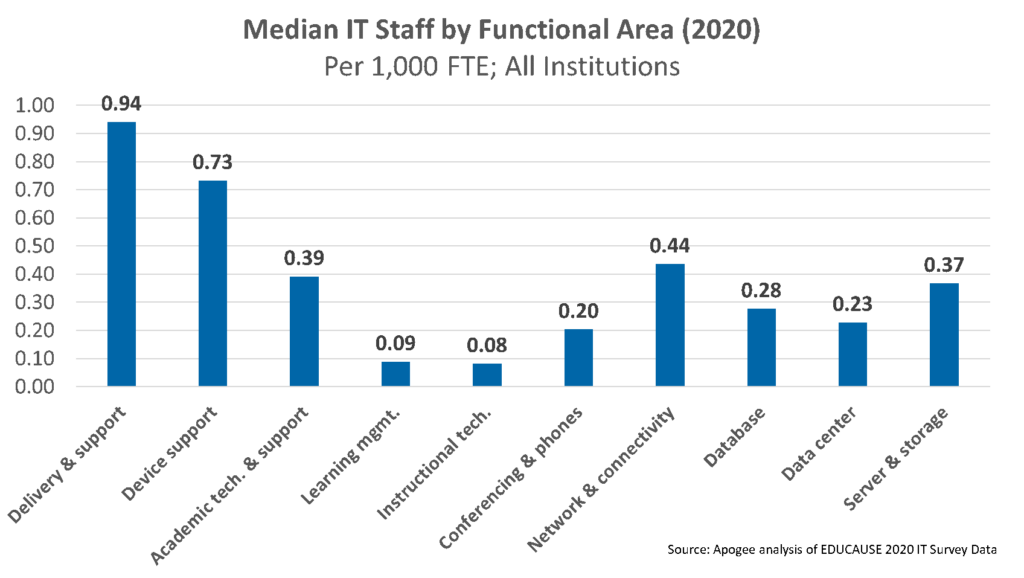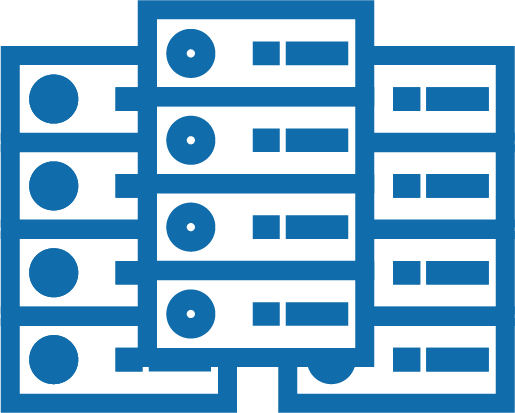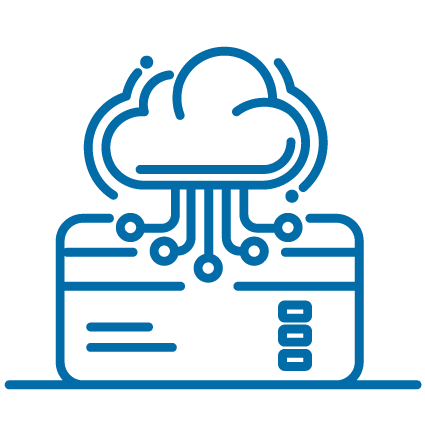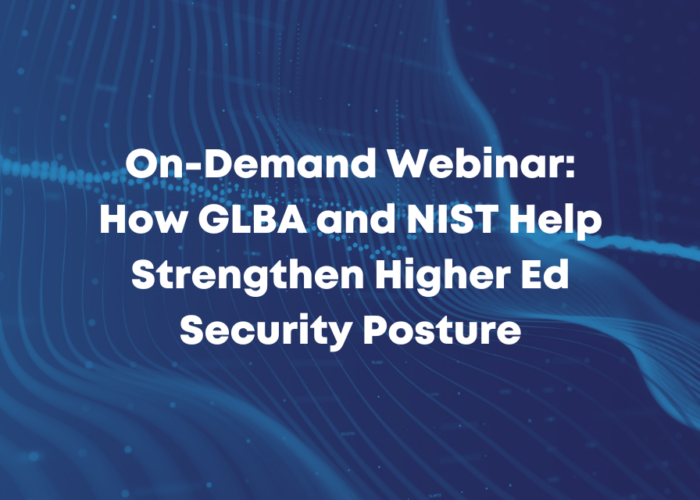Some higher ed CIOs Apogee speaks to believe keeping IT operations in-house makes better business sense. The reasons they offer are strikingly similar. It’s less expensive. It allows for greater control. Unique operational tasks are best left to those with the institutional knowledge to address them.
But these answers outline a strategy for ensuring the status quo, as opposed to propelling the academic institution forward in times that beg for transformation.
The fact is the status quo needs to be smashed. A recent PWC study highlights the effect “The Great Resignation” is having on IT teams. 65% of respondents report looking for a new position while 88% of executives note comparatively high turnover, adding “the competitive war for talent has never been more fierce.” Increasingly understaffed higher ed IT teams are working on a growing list of projects and tasks and rapidly suffering burnout.
Harvard Business Review just yesterday published an article citing a recent study that revealed details that higher ed CIOs should consider:
- Employees between 30 and 45 years old have had the greatest increase in resignation rates, with an average increase of more than 20% between 2020 and 2021. One possible explanation: many of these workers may have reached a breaking point after months and months of high workloads, hiring freezes, and other pressures, causing them to rethink their work and life goals. Sound familiar?
- Resignations for workers in technology increased by 4.5%, likely also due to extreme increases in demand due to the pandemic leading to increased workloads and burnout, a topic we have explored extensively on this blog given the enormity of the shift to remote work and learning, enabled by now frazzled higher ed IT teams.
Harvard Business Review advises taking a data-driven approach to solving this problem from an HR point of view. I encourage you to check out their article and then combine their advice to harness data with some EDUCAUSE data Apogee has analyzed and broken down for you. Your best move right now? Start by benchmarking your IT organization against other institutions and close the most critical gaps first.
THE POWER OF BENCHMARKING
To help bring the process of benchmarking into sharper focus, Apogee engaged EDUCAUSE, the higher ed technology association with the largest community of IT leaders and professionals in the US, to conduct a custom analysis of IT staffing data from 2020 across 479 institutions surveyed. Apogee then engaged a data scientist to conduct further analysis to help us understand the potential implications for the overall productivity and potential impact of higher education IT teams.
EDUCAUSE uses the IPEDS Institutional Full-Time Equivalent (FTE) in their calculations. To benchmark your campus with the greatest precision, you’ll want to visit IPEDS here to obtain the numbers needed to calculate your school’s Institutional FTE number as follows:
Full Time Students + (Part Time Students x .33) + Full Time Staff + (Part Time Staff x .33)
Keep the number close by so you can refer to it. Let’s dive into two key data insights from the survey to see how IT staff are allocated overall and across IT functional areas for higher ed institutions.
Across all institutions offering bachelor’s degrees, the median IT staff per 1000 FTE is 9.7.
Now we’re going to calculate how many IT staff you have per 1000 FTE. For example, if your school has 3039 Institutional FTEs, and you have 15 IT staff members, you will have 4.93 IT staff per 1000 FTE:
15 IT Staff ÷ 3039/1000 = 4.93
Now, with your IT staff per 1000 FTE number in hand, get a sheet of paper or open a Word document and spend a few minutes recording your answers to the following questions:
- If your IT staffing levels are above 10 per 1000 FTE, what challenges might be driving that higher level of staff compared to peer institutions? Is your staff aligned appropriately with the priorities of the institution?
- If your staffing levels are below 10 per 1000 FTE, what are some core areas that you can outsource to shift your existing human resources toward differentiation and innovation?
Now let’s look at the EDUCAUSE breakdown of IT staff by functional area per 1000 FTE:

Get out the calculator again and perform the same math as above for each functional area. Then revisit your sheet of paper or Word document and spend some time answering the following questions:
- How do you compare?
- How might you allocate your staffing needs to better align with strategic priorities?
- Which areas are requiring more staff than the benchmark? Why do you think that is?
- Which areas are understaffed? Is understaffing inhibiting your ability to prioritize those projects that deliver the greatest long-term value?
- If you were to outsource one to two areas, what might those areas be?
- How could you redeploy staff to better roles to increase employee retention?
BREAK THE STATUS QUO
If you’ve previously dismissed the idea of outsourcing to a third-party provider because you believe your current IT structure is fine and the current shortage of IT expertise is temporary, now is the time to reconsider. Leading CIOs redirect their resources and energy away from day-to-day operations and move them towards strategic activities that enable them to innovate in service of their institution’s mission.
IT can only become a value center and deliver innovative services when it confronts how much time and staff is being spent on day-to-day operations rather than strategic priorities. Successful higher ed CIOs solve these challenges by partnering with a managed services provider (MSP) to gain a deep bench of partner support.
The right managed IT services partner wears your colors, understands your goals, and knows your culture, helping you trade common operational tasks for time to focus on more strategic activities. Having specialists who can keep your systems modernized and unlock their full potential allows you and your limited staff to focus on innovation. And an MSP takes on the risk and eliminates the cost of hiring and training new IT staff, while providing you with the ability to redeploy your existing staff to better roles to improve retention.
Next week we’ll publish a blog about our presence at EDUCAUSE 2021, where we’ll have a live session, a booth experience, and opportunities where we can meet and continue this benchmarking conversation in depth. We hope to see you there in person or online!








